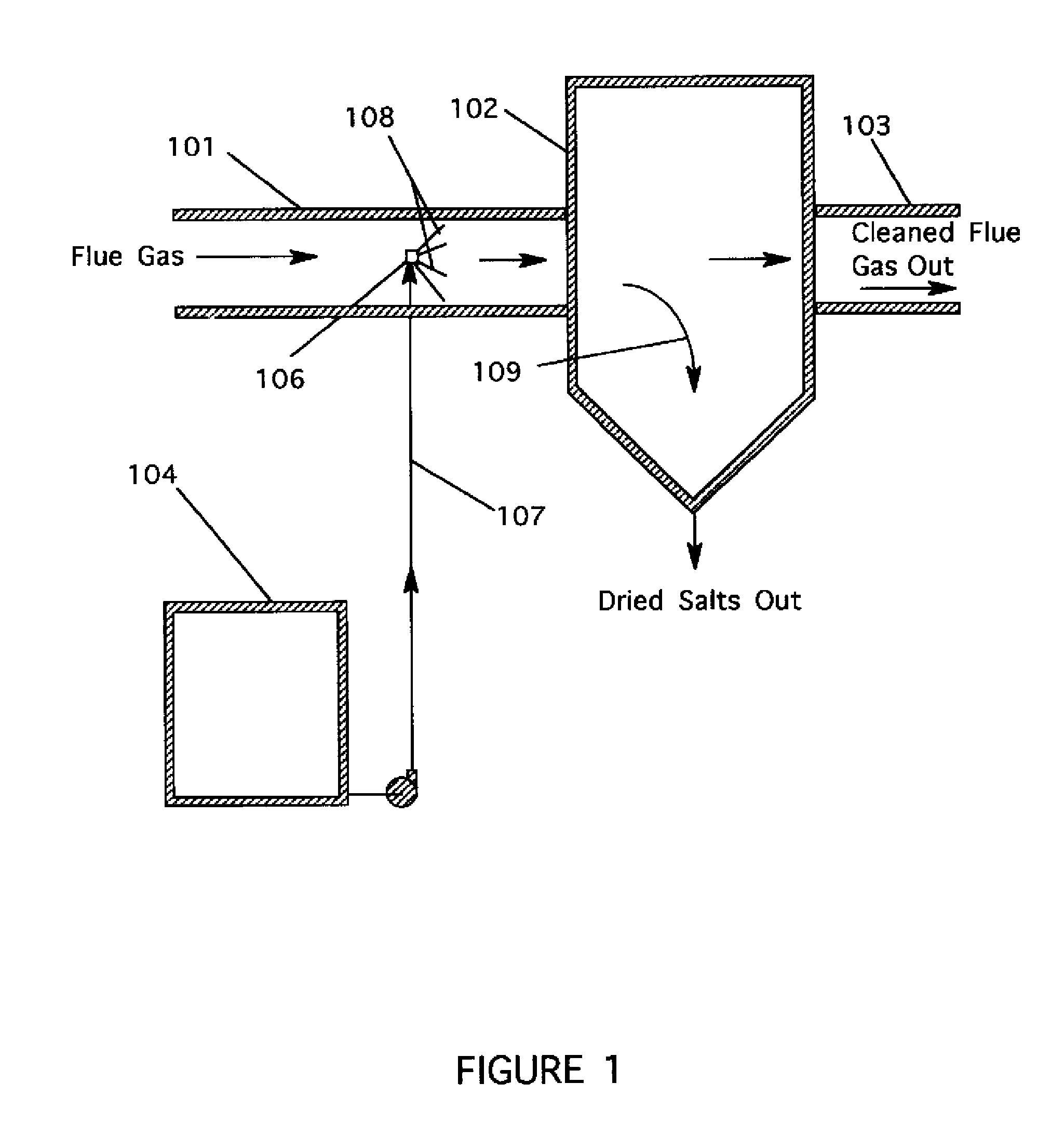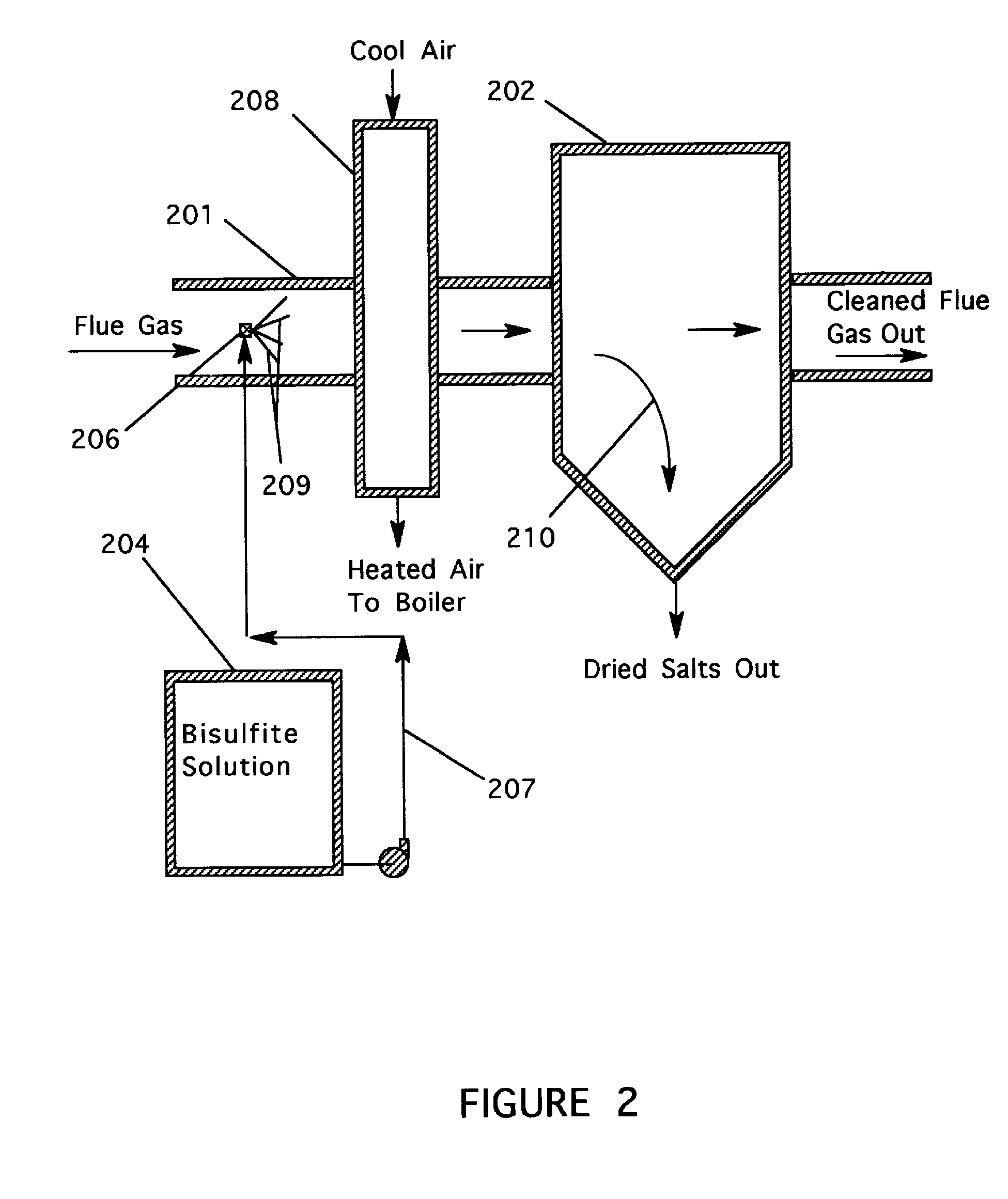Process for removing so3/h2so4 from flue gases
- Summary
- Abstract
- Description
- Claims
- Application Information
AI Technical Summary
Benefits of technology
Problems solved by technology
Method used
Image
Examples
Embodiment Construction
[0011] The present invention resulted from investigations directed to finding alternative reagents for removing SO3 and H2SO4 vapors from flue gas streams. The invention employs aqueous thiosulfate and chloride salt solutions using a spray dispersion technique that allows complete evaporation of the water present in the solution. By specifying the droplet size, the operator can assure evaporation before the spray comes into contact with equipment surfaces.
[0012] During investigations leading to the present invention, data obtained with the use of sodium sulfite / bisulfite solutions to remove SO3 and H2SO4 vapors from a flue gas suggested that in some cases the ratio of sodium to removed SO3 was less than the theoretical value of two. It was concluded that a sodium sulfate reaction product or a sodium sulfate impurity associated with the sodium sulfite / bisulfite solutions was also reacting with SO3 / H2SO4. As an extension of this conclusion, it was theorized that thiosulfates may be s...
PUM
| Property | Measurement | Unit |
|---|---|---|
| Size | aaaaa | aaaaa |
| Volume | aaaaa | aaaaa |
| Solubility (mass) | aaaaa | aaaaa |
Abstract
Description
Claims
Application Information
 Login to View More
Login to View More - R&D
- Intellectual Property
- Life Sciences
- Materials
- Tech Scout
- Unparalleled Data Quality
- Higher Quality Content
- 60% Fewer Hallucinations
Browse by: Latest US Patents, China's latest patents, Technical Efficacy Thesaurus, Application Domain, Technology Topic, Popular Technical Reports.
© 2025 PatSnap. All rights reserved.Legal|Privacy policy|Modern Slavery Act Transparency Statement|Sitemap|About US| Contact US: help@patsnap.com


